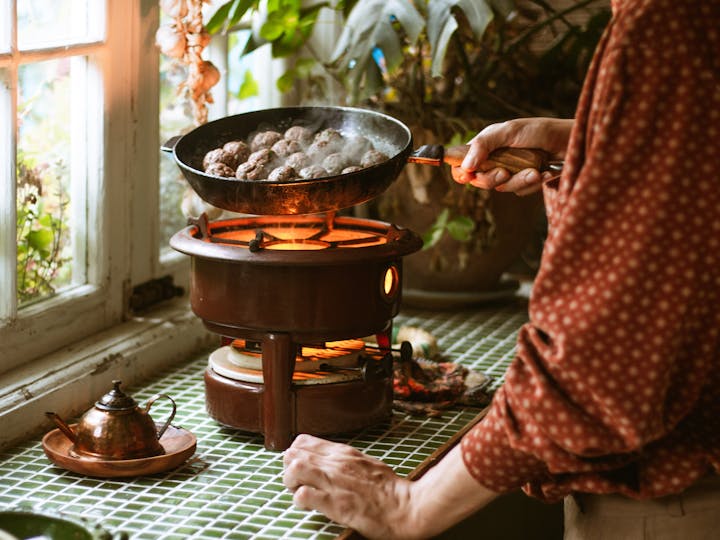When you’re slow cooking, the right equipment makes all the difference. A heavy, lidded pot that retains heat and locks in moisture can completely change the outcome of a dish. That’s where the Dutch oven comes in. Known for its durability and even heat distribution, it’s one of the most versatile tools for long, slow cooking on the stovetop or in the oven.
Unlike electric slow cookers, this type of pot lets cooks brown, simmer, and roast all in one vessel. The tight-fitting lid helps concentrate flavors while maintaining moisture. A Dutch oven offers the control and consistency needed for great results when the goal is a tender roast or a flavorful broth. These techniques can help you get the most out of this versatile tool, so you can make mealtime the easiest part of your day.
Braising for Deep Flavor and Tender Texture
Braising is one of the most well-loved slow cooking techniques, especially for tougher cuts of meat that benefit from long, gentle cooking. It starts with searing the main ingredient to build flavor, then simmering it in a small amount of liquid. The pot’s heavy lid keeps the steam in, turning the dish into a self-basting environment.
This method allows the connective tissue in meat to break down over time, resulting in fork-tender bites that hold onto rich, developed flavors. Vegetables also absorb the broth while maintaining their shape. Braising is especially effective for meals like short ribs, pot roast, or hearty plant-based dishes using lentils and root vegetables.
Simmering Soups and Stews to Build Layers
Simmering is a go-to technique for comfort foods like soups, stews, and chili. It relies on maintaining a low, steady temperature so ingredients can slowly release flavor without overcooking. The thick walls of the pot help prevent scorching while encouraging even heating throughout the dish.
Over time, the liquid reduces and the flavors deepen. Tougher vegetables soften, herbs infuse, and proteins become tender. Stirring occasionally and letting the mixture gently bubble over a couple of hours brings out a richness that quick-cooked meals often miss. This is an ideal approach for recipes that need time to come together and improve as they cook.
Oven-Roasting Low and Slow for Even Cooking
The oven is ideal for low and slow roasting inside a covered pot. Placing the pot in the oven at a moderate temperature allows food to cook evenly from all sides, with the added benefit of steam circulation from within the lid.
This method is especially useful for large cuts of meat or whole poultry that need to stay moist while cooking thoroughly. It also works well for dense vegetables that benefit from softening over time. Thanks to the consistent heat of the oven, the result is food that’s evenly cooked, deeply flavored, and often crisp or caramelized on the outside.
Slow-Baking Breads with a Perfect Crust
One lesser-known use for this type of pot is baking bread, especially rustic loaves that require high heat and steam to develop a crisp crust. Preheating the pot before placing the dough inside helps mimic the environment of a professional bread oven. Once the lid is closed, the moisture from the dough turns to steam, which allows the bread to rise fully before the crust sets.
The sealed environment helps produce a chewy interior with an evenly browned outer layer. This technique works especially well for no-knead breads or sourdough, where the long fermentation and slow baking enhance flavor and texture. With a bit of patience, bakery-level results can be achieved right at home.
Confit for Moist, Delicate Results
Confit is a traditional technique for cooking food slowly in fat at a low temperature. It’s most often used for duck but can also be used for garlic, potatoes, or other vegetables. The goal is to infuse the ingredients with flavor while preserving their natural moisture and structure.
The consistent, gentle heat of the pot helps maintain the precise temperature needed for this process without burning or overcooking. Because the food cooks fully submerged, it becomes incredibly tender without falling apart. Once cooled and stored in the same fat, the result can be kept for days with its flavor and texture intact.
Let Time Do the Work
Slow cooking is all about letting ingredients evolve through low, steady heat. With the right techniques and a sturdy pot, it’s possible to unlock flavors and textures that just don’t happen with quick methods. Whether simmering soup, baking bread, or braising meat, these approaches show that patience and good tools are often the best recipe.
A Dutch oven makes it easy to build rich, balanced meals with minimal fuss. The more it’s used, the more intuitive slow cooking becomes, proving that time, not complexity, is the secret to depth. Start simple, trust the process, and let the flavors develop naturally.


